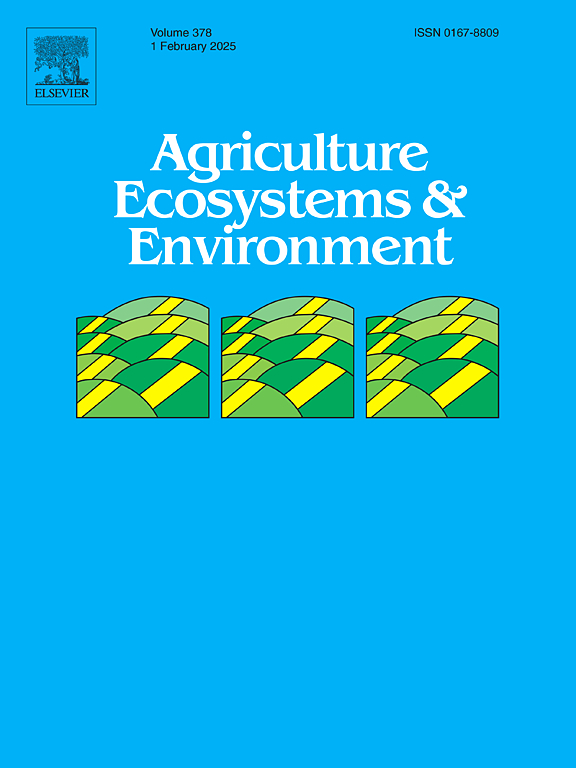Transformation of the agricultural landscape and its influence on small terrestrial mammal communities in South Moravia (Czech Republic, Central Europe)
IF 6
1区 农林科学
Q1 AGRICULTURE, MULTIDISCIPLINARY
引用次数: 0
Abstract
Over the last 70 years, the agricultural landscape in many formerly socialistic European countries have changed markedly. Small mammals inhabiting agricultural landscapes are one of the most influenced communities. In this manuscript, unique long-term datasets from the Czech Republic and three representative periods have been interpreted and investigated as to species composition, variation in numbers, and habitat requirements. The first study period of 1956–1963 was a time when socialist collectivisation started, the agricultural landscape was still partially under the management of small holders and a higher diversity of crops and the landscape elements persisted. Second period studied was 1983–1989 when fields were merged into big areas and intensive land use and high yields were supported by increased use of fertilizers and pesticides. The landscape diversity decreased. In both periods, species of the genus Apodemus and Microtus arvalis were the dominant species. The abundances of mice were approximately similar, however voles’ densities increased rapidly in the second period. Number of the rare species drastically decreased. The third period studied was after land reprivatisation (2008–2010). Only a small part of the land was cultivated by small farmers; most of the land continued to be farmed by large cooperatives. The diversity of planted crops and of the overall landscape increased and effort toward more ecological agricultural management occurred. In contrast to previous two studies, the research was conducted in a more variable landscape, which resulted in lower densities of captured mammals, however the species composition was similar to the 1983–1989 period.
求助全文
约1分钟内获得全文
求助全文
来源期刊

Agriculture, Ecosystems & Environment
环境科学-环境科学
CiteScore
11.70
自引率
9.10%
发文量
392
审稿时长
26 days
期刊介绍:
Agriculture, Ecosystems and Environment publishes scientific articles dealing with the interface between agroecosystems and the natural environment, specifically how agriculture influences the environment and how changes in that environment impact agroecosystems. Preference is given to papers from experimental and observational research at the field, system or landscape level, from studies that enhance our understanding of processes using data-based biophysical modelling, and papers that bridge scientific disciplines and integrate knowledge. All papers should be placed in an international or wide comparative context.
 求助内容:
求助内容: 应助结果提醒方式:
应助结果提醒方式:


